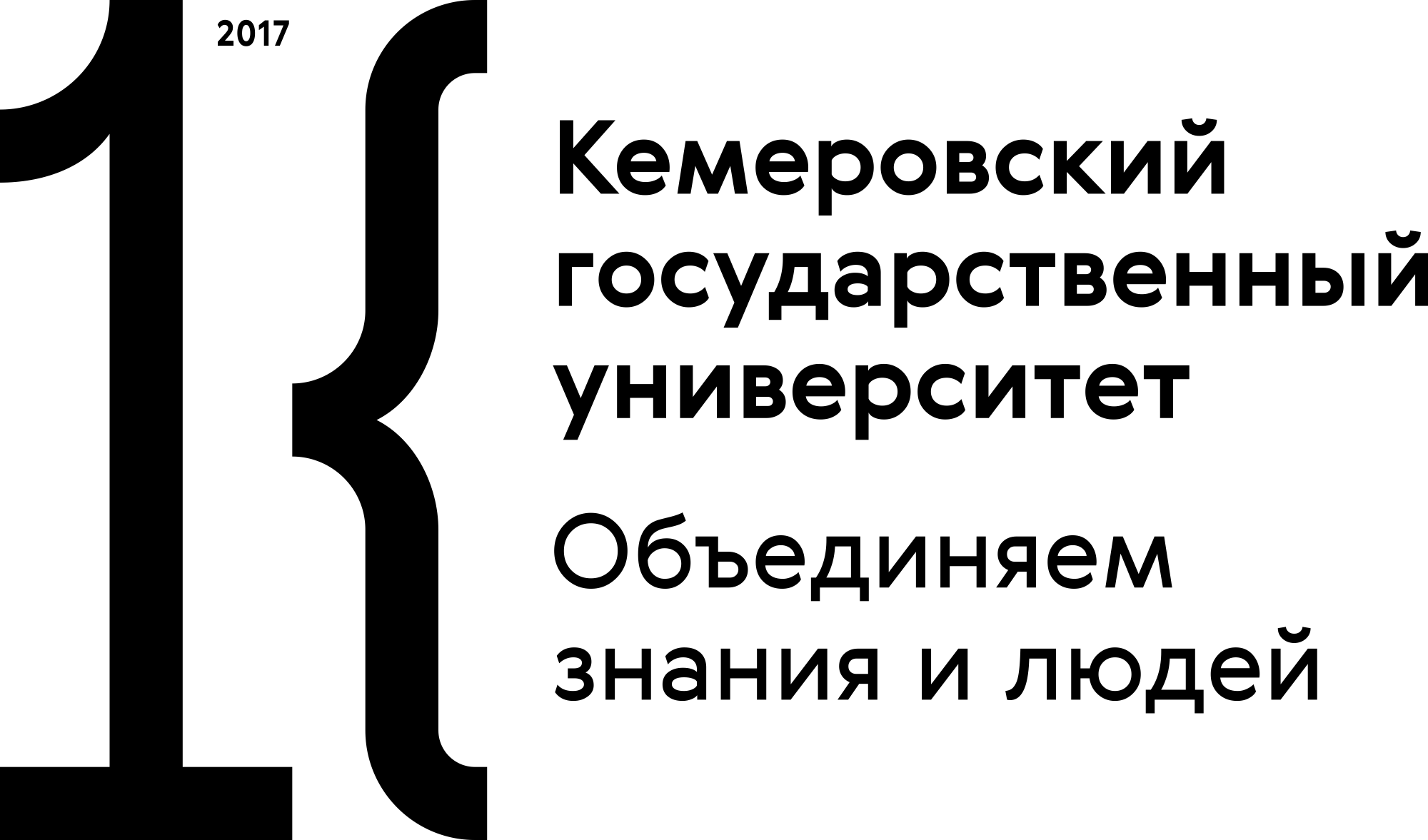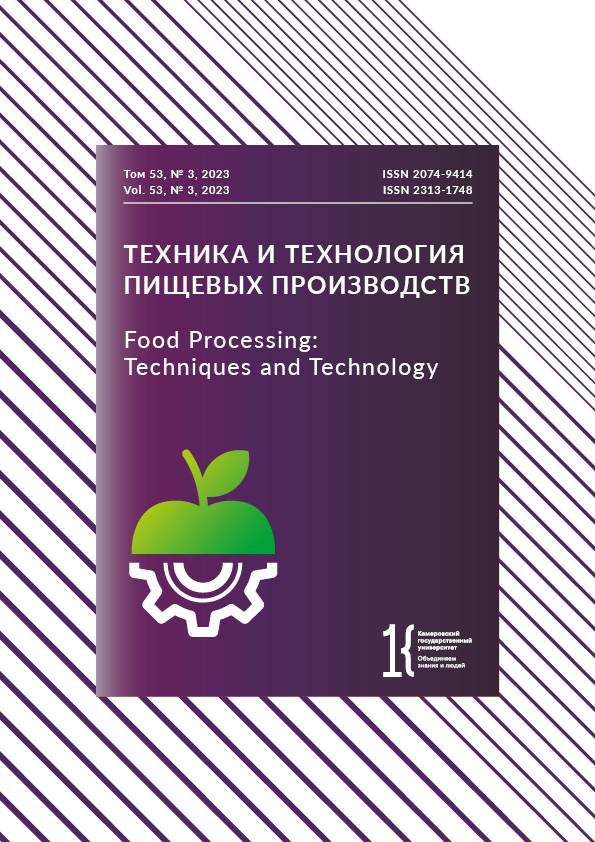Orel, Orel, Russian Federation
Orel, Orel, Russian Federation
Orel, Orel, Russian Federation
Orel, Orel, Russian Federation
Peas (Pisum sativum L.) are rich in protein, B vitamins, and dietary fiber, represented by hemicellulose and pectins. In terms of amino acids, pea proteins are as close to the reference protein as possible. The limiting amino acids of pea protein are sulfur-containing, i.e., methionine and cysteine. Peas are also rich in lysine, which is the limiting amino acid for wheat flour. Therefore, products of pea processing can expand the range of commercial high-protein foods, including functional bakery products. The research objective was to develop a technology for functional bread from a mix of wholemeal pea flour and wheat gluten. The study featured baking wheat flour, wheat gluten, wholemeal pea flour of San Cipriano and Vega varieties, dough samples, and ready-made bread. The carbohydrate-amylase complex of flour was studied using an Amilotest AT-97 device. The starch content was determined by the polarimetric method. The spectrophotometric method served to test the flower samples for protein while the Kjeldahl method was applied to the bread samples. The rheological properties of the dough were studied on a Reotest 2 viscometer. The sensory evaluation relied on a panel of experts, and the chemical composition was revealed by calculation and analytically. The wholemeal pea flour had a lower starch gel viscosity compared to the wheat flour sample. A greater amount of flour added during kneading increased the viscosity of the resulting dough. The acidity was rather high: 7.2 and 9.4 degrees for San Cipriano and Vega samples, respectively, and so was the autolytic activity (≤ 80 s). These useful qualities made it possible to reduce the technological process by 115 and 145 min. The resulting bread demonstrated good physical, chemical, and sensory indicators. The high-protein raw materials increased the protein content in bread by 41.9–46.4%, compared to the control sample, which equaled 33.1–34.2% of the recommended daily intake per 100 g of bread. The optimal ratio of wholemeal high-protein pea flour and wheat gluten was 20/80 for the San Cipriano samples and 30/70 for the Vega variety.
Flour, peas, protein, gluten, protein bread, functional foods, nutritional value, fortification
1. Nasrollahzadeh M, Nezafat Z, Shafiei N. Proteins in food industry. In: Nasrollahzadeh M, editor. Biopolymer-based metal nanoparticle chemistry for sustainable applications. Volume 2: Applications. Elsevier; 2021. pp. 97-136. https://doi.org/10.1016/B978-0-323-89970-3.00003-2
2. Molchanova OV, Andreeva GF. Significance of dietary protein intake in the prevention of obesity, hypertension and breast cancer. The Russian Journal of Preventive Medicine. 2015;18(1):46-53. (In Russ.). https://doi.org/10.17116/profmed201518146-53 EDN: https://elibrary.ru/TZIUVV
3. Eliseeva LG, Makhotina IA, Kalachev SL. Improving the safety of plant foods by reducing phytates. Security Issues. 2019;(1):9-17. (In Russ.). https://www.elibrary.ru/ZARHIT DOI: https://doi.org/10.25136/2409-7543.2019.1.28874
4. Smol’nikova YaV, Bopp VL, Kolomeytsev AV, Stutko OV, Khanipova VA, Broshko DV. Aqueous enzymatic extraction of protein concentrates from Camelina sativa oil cake. Food Processing: Techniques and Technology. 2022;52(1):199-209. (In Russ.). https://doi.org/10.21603/2074-9414-2022-1-199-209 EDN: https://elibrary.ru/NDYFRT
5. Kolpakova VV, Ulanova RV, Kulikov DS, Gulakova VA, Semenov GV, Shevjakova LV. Pea and chickpea protein concentrates: Quality indicators. Food Processing: Techniques and Technology. 2022;52(4):649-664. (In Russ.). https://doi.org/10.21603/2074-9414-2022-4-2394 EDN: https://elibrary.ru/OACVSR
6. Lir DN, Perevalov AYa. Analysis of actual home nutrition of urban children of pre-school and school age. Problems of Nutrition. 2019;88(3):69-77. (In Russ.). https://doi.org/10.24411/0042-8833-2019-10031 EDN: https://elibrary.ru/LVWGBJ
7. Veselov YuV, Chernov GI. Nutrition of the elderly: Sociological aspect. Advances in Gerontology. 2020;33(5):879-884. https://doi.org/10.34922/AE.2020.33.5.007 EDN: https://elibrary.ru/NVEMYT
8. Shterman SV, Sidorenko MYu, Sidorenko YuI, Shterman VS, Chebotareva NI. On the role of sports nutrition in modern sports and society. Food Industry. 2021;(5):75-79. https://doi.org/10.52653/PPI.2021.5.5.018 EDN: https://elibrary.ru/TBYCRI
9. Chen J, Liu G, Pantalone V, Zhong Q. Physicochemical properties of proteins extracted from four new Tennessee soybean lines. Journal of Agriculture and Food Research. 2020;2. https://doi.org/10.1016/j.jafr.2020.100022
10. Kobelkova IV, Korosteleva MM, Kobelkova MS. The role of high-protein specialized food in increasing the adaptive athletes' potencial. Clinical Nutrition and Metabolism. 2021;2(2):92-99. (In Russ.). https://doi.org/10.17816/clinutr81572 EDN: https://elibrary.ru/GATLJL
11. Kashirskih EV, Babich OO, Kriger OV, Ivanova SA. Oat protein concentrate as part of curd product for sport nutrition. Food Processing: Techniques and Technology. 2019;49(3):345-355. (In Russ.). https://doi.org/10.21603/2074-9414-2019-3-345-355 EDN: https://elibrary.ru/MAKCWJ
12. Ryazantseva KA, Agarkova EYu, Fedotova OB. Continuous hydrolysis of milk proteins in membrane reactors of various configurations. Foods and Raw Materials. 2021;9(2):271-281. https://doi.org/10.21603/2308-4057-2021-2-271-281 EDN: https://elibrary.ru/XVLLQE
13. Kolpakova VV, Kovalenok VA. Relationship of the functional properties of dry wheat gluten with amino acid composition and its quality indicators. Proceedings of the Voronezh State University of Engineering Technologies. 2019;81(1):173-180. (In Russ.). https://doi.org/10.20914/2310-1202-2019-1-173-180 EDN: https://elibrary.ru/YBRHCJ
14. Shelepina NV. The comparison characteristic of smooth and wrinkled peas albuminous complex. Scientific notes of the Oryol State University. Series: Natural, Technical, and Medical Sciences. 2011;(5):277-282. (In Russ.). https://www.elibrary.ru/PHNPIB
15. Voskobulova NE, Vereshchagina AS, Urazgulov RSh, Kurilkina MYa. Amino acid composition and biological value of pea protein depending on cultivation techniques. Animal Husbandry and Fodder Production. 2019;102(3):117-125. (In Russ.). https://doi.org/10.33284/2658-3135-102-3-117 EDN: https://elibrary.ru/CWXQLW
16. Bychkova ES, Podgorbunskikh EM, Rozhdestvenskaya LN, Buchtoyarov VA, Kudacheva PV. Development of technology for bakery products with the introduction of pea hydrolyzate. Storage and Processing of Farm Products. 2022;(3):56-66. (In Russ.). https://doi.org/10.36107/spfp.2022.371 EDN: https://elibrary.ru/GEXQOH
17. Korolev AA, Urubkov SA, Koptyaeva IS, Korneva LYa. Grain of legumes plants, general characteristics and application in food concentrates technology. Polzunovskiy Vestnik. 2020;(2):35-39. (In Russ.). https://doi.org/10.25712/ASTU.2072-8921.2020.02.007 EDN: https://elibrary.ru/OPRDFG
18. Dhaliwal SK, Salaria P, Kaushik P. Pea seed proteins: A nutritional and nutraceutical update. In: Jimenez-Lopez JC, editor. Grain and seed proteins functionality. IntechOpen; 2021. https://doi.org/10.5772/intechopen.95323
19. Hacisalihoglu G, Beisel NS, Settles AM. Characterization of pea seed nutritional value within a diverse population of Pisum sativum. PLoS ONE. 2021;16(11). https://doi.org/10.1371/journal.pone.0259565
20. Samtiya M, Aluko RE, Dhewa T. Plant food anti-nutritional factors and their reduction strategies: An overview. Food Production, Processing and Nutrition. 2020;2. https://doi.org/10.1186/s43014-020-0020-5 EDN: https://elibrary.ru/DRWIZS
21. Veber AL, Leonova SA, Davletov FA. Phytochemical potential and inhibitory properties of new varieties of leguminous plants. Food Processing: Techniques and Technology. 2019;49(2):281-288. (In Russ.). https://doi.org/10.21603/2074-9414-2019-2-281-288 EDN: https://elibrary.ru/KNGRTK
22. Kolpakova VV, Kulikov DS, Ulanova RV, Chumikina LV. Food and feed protein preparations from peas and chickpeas: Production, properties, application. Food Processing: Techniques and Technology. 2021;51(2):333-348. (In Russ.). https://doi.org/10.21603/2074-9414-2021-2-333-348 EDN: https://elibrary.ru/PQCGGQ
23. Shelepina NV. Pea germ powder as ingredient of fortified high-grade wheat flour bread. IOP Conference Series: Earth and Environmental Science. 2022;988. https://doi.org/10.1088/1755-1315/988/2/022047 EDN: https://elibrary.ru/LMRXIK
24. Prikhodko DV, Krasnoshtanova AA. Using casein and gluten protein fractions to obtain functional ingredients. Foods and Raw Materials. 2023;11(2):223-231. https://doi.org/10.21603/2308-4057-2023-2-569 EDN: https://elibrary.ru/NNEAKQ
25. Shen Y, Hong S, Li Y. Pea protein composition, functionality, modification, and food applications: A review. Advances in Food and Nutrition Research. 2022;101:71-127. https://doi.org/10.1016/bs.afnr.2022.02.002. EDN: https://elibrary.ru/SZBAIF
26. Boukid F. The realm of plant proteins with focus on their application in developing new bakery products. Advances in Food and Nutrition Research. 2022;99:101-136. https://doi.org/10.1016/bs.afnr.2021.11.001 EDN: https://elibrary.ru/SVBKNX
27. Osipova GA, Koryachkina SYa, Koryachkin VP, Seregina TV, Zhugina AE. Effects of protein-containing additives on pasta quality and biological value. Foods and Raw Materials. 2019;7(1):60-66. https://doi.org/10.21603/2308-4057-2019-1-60-66 EDN: https://elibrary.ru/ASXYKI
28. Koryachkina SYa, Labutina NV, Berezina NA, Khmeleva EV. Quality control of raw materials, semi-finished products, and bakery products. Moscow: DeLi plyus; 2012. 496 p. (In Russ.). EDN: https://elibrary.ru/QNJAFV
29. Ren H, Setia R, Warkentin TD, Ai Y. Functionality and starch digestibility of wrinkled and round pea flours of two different particle sizes. Food Chemistry. 2021;336. https://doi.org/10.1016/j.foodchem.2020.127711
30. Cui W, Ma Z, Li X, Hu X. Structural rearrangement of native and processed pea starches following simulated digestion in vitro and fermentation characteristics of their resistant starch residues using human fecal inoculum. International Journal of Biological Macromolecules. 2021;172:490-502. https://doi.org/10.1016/j.ijbiomac.2021.01.092
31. Terstegen T, Grebenteuch S, Rohn S, Müller K-J, Flöter E, Ulbrich M. Organic pea starches - I. Comprehensive investigation of morphological and molecular properties. Starch - Starke. 2023;75(3-4). https://doi.org/10.1002/star.202200220
32. Putina OV, Bobkov SV, Vishnyakova MA. Seed carbohydrate composition and its relation to another breeding important traits of garden pea (Pisum sativum L.) in Krasnodar region. Agricultural Biology. 2018;53(1):179-188. (In Russ.). https://doi.org/10.15389/agrobiology.2018.1.179rus EDN: https://elibrary.ru/YTJOKS
33. Machikhin YuA. Rheometry of food raw materials and products. Moscow: Agropromizdat; 1990. 271 p. (In Russ.).
34. Radzhabadiev RM, Evstratova VS, Solntseva TN, Samoilov AS, Diel F, Khanferyan RA. Evalution of chemical composition and energy value of the diets of highly skilled athletes. RUDN Journal of Medicine. 2018;22(1):106-119. (In Russ.). https://doi.org/10.22363/2313-0245-2018-22-1-106-119 EDN: https://elibrary.ru/YWYAFV











